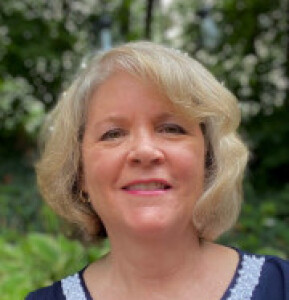ufn3654 uln3654's collections
Fabulous Fabrics
<p>Use images to introduce a stamp-printing lesson with primary students. Observe selected images and discuss. . . </p>
<ul><li>What shapes or lines do you see?</li><li>Which fabrics have repeat patterns?</li><li>Which fabrics have alternating patterns?</li><li>What could the fabric be used for?</li></ul><p>Play a sorting game with images printed on cards. Categories for sorting could include stripes, plaid, checkerboard, floral, polka dot, etc.</p>
<p>ART MAKING CHALLENGE: </p>
<ul><li>Students will stamp print on paper with cardboard edges, stampers, or found objects to create patterns. </li><li>Printed paper will then be cut into clothing for collage self portraits.</li></ul><p></p>
 ufn3654 uln3654
ufn3654 uln3654
23
Evocative Memories
<p>Memories can evoke strong feelings and inspire artists to tell stories in their art. Look at a selected image with a partner or table group and discuss:</p>
<p></p>
<ul><li>What is the story?</li><li>How do you think the person or people feel about this experience?</li><li>What do you see that makes you think they feel that way?</li><li>Have you ever had the same feeling?</li></ul><p></p>
 ufn3654 uln3654
ufn3654 uln3654
13
Doorways & Passages
<p>Doorways are the transition point from one place to another. They can be functional, decorative, symbolic, or a combination of all three. Work with a partner to view and discuss a selection of doorways.</p>
<p></p>
<ul><li>What does it look like?</li><li>What is it made of?</li><li>Where do you think it leads?</li><li>How does it impact the viewer or person who might want to enter/exit?</li></ul><p>ART MAKING CHALLENGES: </p>
<p></p>
<ul><li>Design a doorway or passageway that symbolizes what happens inside.</li><li>Design a doorway or passageway that links a physical place to an imaginary one.</li><li>Design a doorway to represent a transition from one period of your life to another. </li></ul><p></p>
<p></p>
 ufn3654 uln3654
ufn3654 uln3654
26
Contemporary & Historic Architecture
<p>How does the past influence the present and future? Compare forms in contemporary architecture with those of buildings from ancient and Renaissance times. What similarities can you find? </p>
 ufn3654 uln3654
ufn3654 uln3654
32
Community Neighborhoods
<p>Images support learning in art lessons about the big idea of Community. Compare/contrast urban, suburban, and rural communities. What do all communities have in common?</p><p>Activity: Print selected images on 8.5" x 11" card stock and laminate. Cut each image into several pieces. Number the backs of the pieces and place in a zip-lock bag with the same number. </p><p>Each student receives a puzzle piece and must work with their small group to re-assemble the image. Then make a list of clues about the community depicted. As each group shares their lists, the teacher records responses. Duplicate responses get a tally mark next to the word. </p><p>Teacher can then lead a discussion about what makes a community and help students make connections to similarities with their own local community.</p>
 ufn3654 uln3654
ufn3654 uln3654
12
Community Murals
<p>These images come from murals that depict people at work. What jobs do you see them doing? How does each job help the community?</p>
 ufn3654 uln3654
ufn3654 uln3654
10
Celebrate Good Times
<p>Images support second grade collage lesson. Choose an image that connects to a poem read to students (from <em>Celebrate American in Poetry in Art,</em> edited by Nora Panzer). Use questioning to describe and analyze the artwork: </p>
<ul><li>"What do you see?" </li><li>"What is happening here? </li><li>"What clues make you think that?"</li><li> "What else is happening in this image?" </li></ul>
<p>Celebration can take forms other than parades, dances, or parties. A portrait can celebrate the dignity of a worker <em>(Lunch at the Grill)</em> or someone who stood up for freedom (Harriet Tubman in <em>I Go to Prepare a Place for You</em>), or the birth of a new baby (<em>Family</em> by Romare Bearden).</p>
<p>Ask students to take a minute to think of a personal experience that this image reminds them of, then turn to a partner and share. This prepares them for the next step, which is to visualize a favorite community celebration and sketch in preparation for making a collage.</p>
 ufn3654 uln3654
ufn3654 uln3654
11
Body Language
<ul><li>How does a person's gaze, stance or the way they use their hands communicate a mood or feeling?</li><li>In artworks depicting two or more people, how are they interacting? What does that say about their relationship to each other?</li></ul><br /><p><br /></p>
 ufn3654 uln3654
ufn3654 uln3654
15
Birds
<p>Compare similarities and differences among types of birds. </p><p>Analyze bird sculptures: what shapes/forms help represent the body, head, neck, beak, or wings? Which type of bird would you like to sculpt in clay?</p>
 ufn3654 uln3654
ufn3654 uln3654
16
Art from Memories
<p>Compare and contrast artworks by William Christenberry and Robert Rauchenberg:</p>
<ul><li>How do they depict the passage of time? </li><li>How are events or environments represented?</li><li>What do these images communicate about control or loss of control?</li></ul>
<p></p>
 ufn3654 uln3654
ufn3654 uln3654
12



















